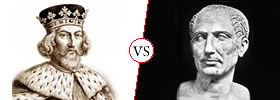Difference between Noun and Pronoun
Key Difference: Nouns are used to name people, places, objects, events, occurrences, etc. A pronoun is a word that suitably replaces the noun in a sentence.
.jpg) Nouns are the words which are used to identify people, places, objects, etc. Nouns are one of the eight parts of speech in the English language. These words are often the subject in a sentence. In absence of nouns, both speech and text become impaired. Nouns are mainly of two types:
Nouns are the words which are used to identify people, places, objects, etc. Nouns are one of the eight parts of speech in the English language. These words are often the subject in a sentence. In absence of nouns, both speech and text become impaired. Nouns are mainly of two types:
Common Nouns: As the name suggests, these nouns are names in general. These could be the names of a person, place, thing, etc. The first alphabet of a common noun is never capitalized, unless it opens a sentence. Common nouns are more or less the different names that we use in our daily life.
For example:
Put the bread inside.
Proper Nouns: These are the nouns used to describe particular places, people, happenings, etc. Words like these always have their first alphabet in capital as a rule. The names of the days in a week, religious texts, historical monuments, etc. are required to be used as proper nouns.
For example:
Princess Diana visited the Niagara Falls.
A few examples of nouns used in sentences are:
- He came late to class.
- We have five children!
- What a great day!
- There are eight in the room.
- He hit the ball out of the park.
 Pronouns are the words that can be readily substituted in place of nouns. Using nouns repeatedly in a piece of text can make it cumbersome and redundant, which is why pronouns are required to compile the text neatly. The use of pronouns also makes it easy to further describe a person, place, object, etc., without the repetition of their names.
Pronouns are the words that can be readily substituted in place of nouns. Using nouns repeatedly in a piece of text can make it cumbersome and redundant, which is why pronouns are required to compile the text neatly. The use of pronouns also makes it easy to further describe a person, place, object, etc., without the repetition of their names.
For example:
Brad was hungry, so he ate an apple.
In the sentence above, Brad is the noun. In the first part, we’re introduced to Brad and know that he was feeling hungry. From the second part we know that he ate an apple to satisfy his hunger. However, if we were to eliminate the pronoun ‘he’ from the second part, the sentence would be clumsy in construction and would need to be written as two separate sentences instead. So, using the pronoun he, the sentence is made sensible and simpler.
Few examples of using pronouns in a sentence are:
- I saw the dog; I think it was chewing your shoe.
- I was thinking about a quick snack. I was thinking about that, too.
- The man who had fixed the leak had left his spanner.
- The children dressed themselves.
- Whose pizza is this?
Comparison between Noun and Pronoun:
|
|
Noun |
Pronoun |
|
Meaning |
Nouns are used to name people, places, objects, events, occurrences, etc. |
A pronoun is a word that suitably replaces the noun in a sentence.
|
|
Types |
Common, proper, countable, abstract, etc. |
Demonstrative, indefinite, interrogative, etc. |
|
Example of usage |
Meet my neighbor Sheila, who is a dancer. |
Meet my neighbor Sheila, who is a dancer. |
Image Courtesy: edubuzz.org, deceptivelyeducational.blogspot.com









Add new comment